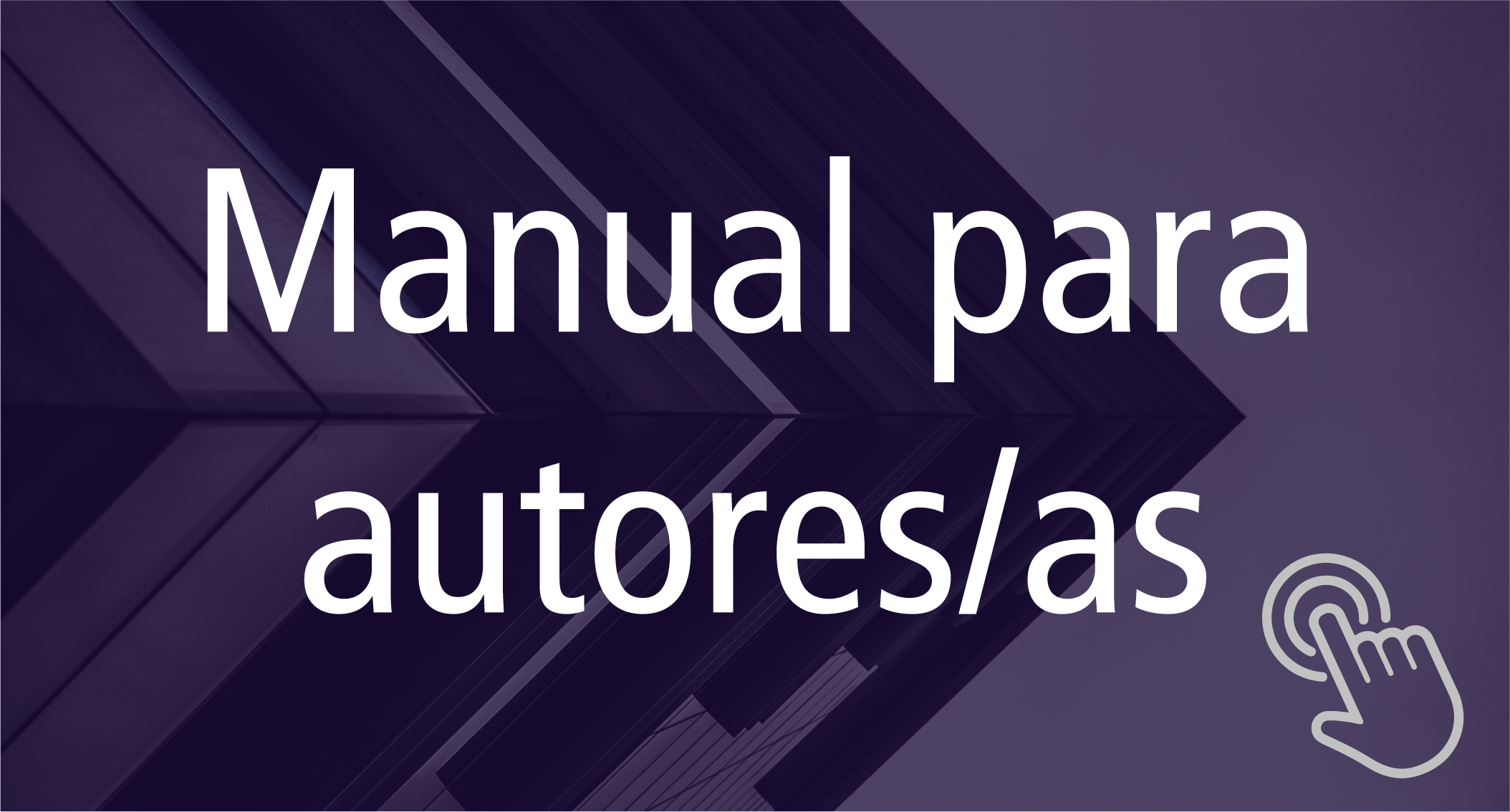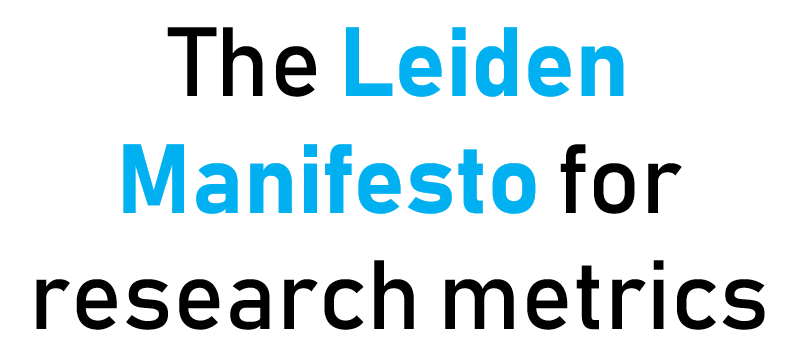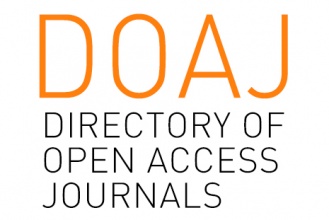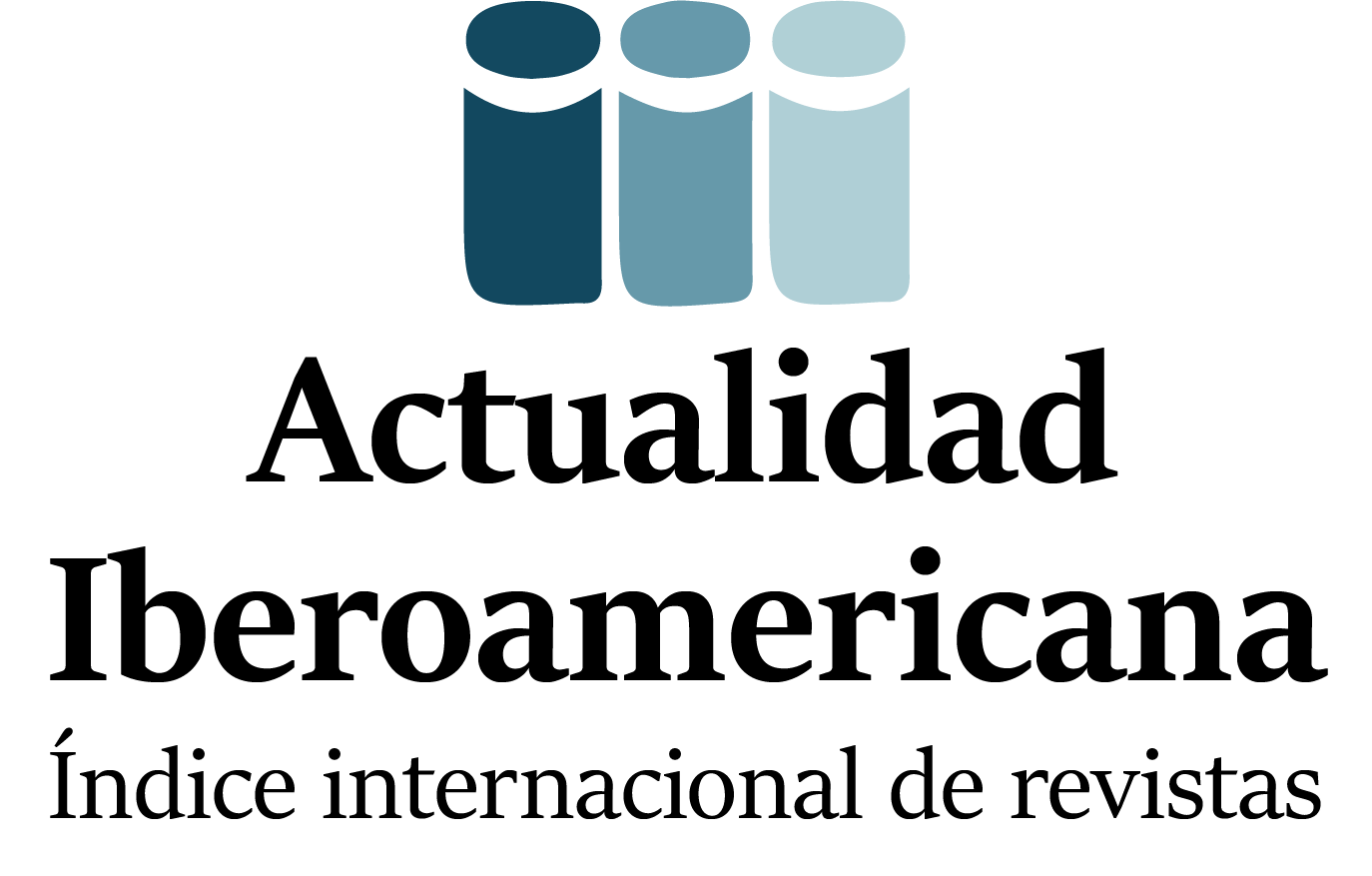Evidence of structural validity and reliability of the Multidimensional Anxiety Scale
DOI:
https://doi.org/10.24215/2422572Xe064Keywords:
anxiety, multidimensional evaluation, structural validity, reliabilityAbstract
The psychometric properties of the Multidimensional Anxiety Scale (EMA; Díaz Kuaik & de la Iglesia, 2017) are presented. A sample of 543 subjects between 18 and 88 years old (M= 35.86 and SD=14.27) were analyzed, of which 65.4% were women and 34.6% were men. The results of the exploratory analysis supported the three-factor model (56.94% variance, KMO=.959; Barlett x2=8239.100). The confirmatory factor analysis concluded that both the correlated three-factor model (x2/gl=2.258; CFI=.916; RMSA=.063) and the model that included a general second-order factor (x2/gl=2.258; CFI=.902; RMSA=.048) were appropriate. Reliability was analyzed through Cronbach's alpha, finding adequate internal consistency indices in each scale measure (alpha>.76). From these results it was concluded that the instrument had sufficient evidence of internal validity and reliability to be used as a multidimensional measure of anxiety in the clinical and general population.
Downloads
Metrics
References
Bados, A., Gómez Benito, J. y Balaguera, G. (2010). The State-Trait Anxiety Inventory, Trait Version: does It really measure anxiety? Journal of Personality Assessment, 92(6), 560-567. https://doi.org/10.1080/00223891.2010.513295
Bandelow, B., & Michaelis, S. (2015). Epidemiology of anxiety disorders in the 21st century. Dialogues in clinical neuroscience, 17(3), 327-335. https://doi.org/10.1016/j.jfludis.2012.11.002
Barlow, D. H., & Durand, V. M. (2013). Abnormal Psychology. An integrative approach. Canadá: Cengage Learning.
Beck, A. T., Brown, G., Epstein, N., & Steer, R. (1988). An Inventory for Measuring Clinical Anxiety: Psychometric Properties. Journal of Consulting and Clinical Psychology, 56(6), 893-897. https://doi.org/10.1037//0022-006x.56.6.893
Bermúdez, J. (1983). Modelo interactivo de ansiedad: implicaciones y contrastación empírica. Revista de Psicología General y Aplicada, 38, 1003-1030.
Cannon, W. B. (1927): The James-Lange's theory of emotion: a critical examination and an alteration. American Journal of Psychology, 39(1-4), 106-124. https://doi.org/10.2307/1415404
Cannon, W. B. (1931). Again the James Lange and the thalamic theories of emotion. Psycological Review, 38(4), 281-295. https://doi.org/10.2307/1422695
Cano Vindel, A. C., & Miguel Tobal, J. J. (abril de 1990). Evaluación mediante autoinforme de la reactividad cognitivo-fisiológica-motora ante diferentes situaciones: Diferencias individuales y situacionales. Psicología española en la Europa de los 90: ciencia y profesión, 9, 94-101.
Cano Vindel, A. C., & Miguel Tobal, J. J. (1999). Evaluación de la ansiedad desde un enfoque interactivo y multidimensional: El Inventario de Situaciones y Respuestas de Ansiedad (ISRA). Psicología Contemporánea, 6(1), 14-21.
Cattell, R. B. (1983). La naturaleza y medida de la ansiedad. Estudios de Psicología, 4(16), 47-59. https://doi.org/10.1080/02109395.1983.10821367
Cattell, R. B., & Scheier, I. H. (1958). The nature of anxiety: A review of thirteen multivariate analyses comprising 814 variables. Psychological Reports, 4(3), 351-388. https://doi.org/10.2466/pr0.4.3.351-388
Cattell, R. B., & Scheier, I. H. (1961). The meaning and measurement of neuroticism and anxiety. Oxford: Ronald. https://doi.org/10.1111/j.2044-8260.1963.tb00394.x
Cia, A. H., Stagnaro, J. C., Aguilar-Gaxiola, S., Sustas, S., Serfaty, E., Nemirovsky, M., Kessler, R. C, & Bejet, C. Twelve-month utilization rates and adequacy of treatment for mental health and substance use disorders in Argentina. Braz J Psychiatry, 00(00), 1-7. http://dx.doi.org/10.1590/1516-4446-2018-0036
Clark, D., & Beck, A. (2012). Terapia cognitiva para trastornos de ansiedad: ciencia y práctica. Bilbao: Desclee de Brower.
Creamer, M. Foran, J., & Bell, R. (1995). The Beck Anxiety Inventory in a non-clinical sample. Behavior Research and Therapy, 33(4), 477-485. https://doi.org/10.1016/0005-7967(94)00082-u
de Ansorena, A., Cobo, J., & Romero, I. (1983). El constructo ansiedad en psicología: una revisión. Estudios de Psicología, 31-45. https://doi.org/10.1080/02109395.1983.10821366
Díaz Kuaik, I. (2018). Validez diferencial y baremización de la Escala Multidimiensional de Ansiedad (EMA). Poster presentado en X Congreso Internacional de Investigación y Práctica Profesional en Psicología XXV Jornadas de Investigación XIV Encuentro de Investigadores en Psicología del MERCOSUR. Facultad de Psicología-Universidad de Buenos Aires.
Díaz Kuaik, I. & de la Iglesia, G. (2017). Construcción preliminar de una escala multidimensional para evaluar síntomas clínicos de ansiedad. Evidencias de validez de contenido y aparente. Psicodebate, 17(1), 71-100. http://dx.doi.org/10.18682/pd.v17i1.658
Díaz Kuaik, I. & de la Iglesia, G. (2019a). Ansiedad: Revisión y Delimitación Conceptual. Summa Psicológica, 16(1), 42-50.
Díaz Kuaik, I. & de la Iglesia, G. (2019b). La evaluación multidimensional de la ansiedad: Técnicas, aplicaciones y alcances. Revista Evaluar, 19(1)43-58.
Endler, N.S. (1978). The interaction model of anxiety. Some posible implications. En O.M. Landers y R.W. Christina (Eds.), Psychology of Motro Behavior and Sport, Human Kinetics, Campaing (pp.332-351).
Hair, J. F., Anderson, R. E., Tatham, R. L., & Black, W. C. (1999). Análisis multivariante Madrid: Prentice Hall.
Hewitt, P. L., Norton, G. R. (1993). The Beck Anxiety Inventori: A psychometric analysis. Psychological Assessment, 5(4), 408-412. https://doi.org/10.1037//1040-3590.5.4.408
Keegan, E. (2007). Escritos de psicoterapia cognitiva. Buenos Aires: Eudeba.
Keegan, E. & Holas, P. (2010). Cognitive-behavior therapy. Theory and practice. En: Carlstedt, R. (Ed.) Handbook of integrative clinical psychology, psychiatry and behavioral medicine. Perspectives, practices and research. New York, Springer.
Kirchner, T., Torres, M. & Forns, M. (1998). Evaluación psicológica: modelos y técnicas. Barcelona: Paidós.
Lang, P. J. (1968). Fear reduction and fear behavior: Problems in treating a construct. En J. U. H. Shilen (Ed.), Research in psychotherapy (pp. 90-102). Washington: American Psychological Association.
Lang, P. J. (1971). The application of psychophysiological methods to the study of psychotherapy and behavior modification. Handbook of psychotherapy and behavior change, 75-125.
Leibovich de Figueroa, N.B (1991). Ansiedad: algunas concepciones teóricas y su evaluación. En M. M. Casullo, N. B. Leibovich de Figueroa & M. Askenazi (Eds.), Teoría y técnicas de evaluación psicológica (pp. 123-155). Buenos Aires: Psicoteca.
Martínez Arias, R.. (2005). Psicometría: teoría de los test psicológicos y educativos. Madrid: Síntesis.
Martínez Monteagudo, M. C., Inglés, C. J., Cano Vindel, A., & García Fernández, J. M. (2012). Estado actual de la investigación sobre la teoría tridimensional de la ansiedad de Lang. Ansiedad y Estrés, 18(2-3), 201-219.
Miguel Tobal, J. J. & Cano Vindel, A. C. (1986). ISRA Inventario de situaciones y respuestas de ansiedad. Madrid: Tea Ediciones.
Miguel Tobal, J. J. & Cano Vindel, A. C. (2002). ISRA Inventario de situaciones y respuestas de ansiedad. Madrid: Tea Ediciones.
Ministerio de la Salud de la Nación Argentina (2010). Sistema de Vigilancia Epidemiológica en Salud Mental y Adicciones. Estimación de la Población Afectada de 15 años y más por Trastornos Mentales y del Comportamiento en Argentina. Recuperado de http://www.inclusionmental.com.ar/contents/biblioteca/1329413814_-estimacion-de-lapoblacion-afectada-por-salud-mental-arg.pdf
Navarro, G. E. R., Acevedo, E. R., Sánchez, M. D. G., & Delgado, O. E. L. (2016). Motivos de consulta psicológica en grupos etarios. Investigación y Práctica en Psicología del Desarrollo, 1(1), 221-228.
Nunnally, J. C., & Bernstein, I. H. (1994). Psychometric Theory (3rd ed.). New York: McGraw-Hill.
Organización Panamericana de la Salud (2017). Depresión y otros trastornos mentales comunes. Estimaciones sanitarias mundiales. Washington, DC: Autor.
Otuño Sierra, J., García Velazco, L., Inchausti, F., Debbané, M., & Fonseca Pedrero, E. (2016). Nuevas aproximaciones en el estudio de las propiedades psicométricas del STAI. Actas Esp Psiquiatr, 44(3), 83-92.
Sanz, J. (2014). Recomendaciones para la utilización de la adaptación española del Inventario de Ansiedad de Beck (BAI) en la práctica clínica. Clínica y Salud, 25(1), 39-48. https://doi.org/10.1016/s1130-5274(14)70025-8
Sanz, J., & Navarro, M. E. (2003). Propiedades psicométricas de una versión española del Inventario de Ansiedad de Beck (BAI) en estudiantes universitarios. Ansiedad y Estrés, 9(1), 59-84.
Sanz, J., García Vera, M., & Fortún, M. (2012). El inventario de ansiedad de Beck (BAI) propiedades psicométricas de la versión española en pacientes con trastornos psicológicos. Behavioral Psychology, 20(3), 563-583.
Spielberger, C. D. (1966). Theory and research on anxiety. En C. D. Spielberger (Ed.), Anxiety and behavior (pp. 3–19). New York: Academic Press.
Spielberger, C. D. (1972). Conceptual and methodological issues in anxiety research. En C. D. Spielberger (Ed.), Anxiety: Current trends in theory and research (pp. 481– 492). New York: Academic Press.
Spielberger, C. D., Gorsuch, R. L., & Lushene, R. E. (1983). Manual for the State-Trait Anxiety Inventory. STAI (Form Y), Self evaluation questionnaire. Palo Alto: CA: Consulting Psychologists Press.
Steer, R., Ranieri, W., Beck, A., & Clark, D. (1993). Further evidence for the validity of the Beck Anxiety Inventory with psychiatric outpatients. Journal of Anxiety Disorders, 7(3), 195-205. https://doi.org/10.1016/0887-6185(93)90002-3
Tornimbeni, S., Pérez, E. & Olaz, F. (2008). Introducción a la psicometría. Buenos Aires: Paidós.
Vallejo Seco, G. (1992). Análisis Multivariantes Aplicados a las Ciencias del Comportamiento. Oviedo: Universidad de Oviedo.
Via Alvarado, J. (2011). Ansiedad en la consulta de guardia. Recuperado de: http://www.potgradofcm.edu.ar/ProducciónCientíficos/70.pdf.
World Health Organization (2017). Depression and Other Common Mental Disorders Global Healgh Estimates. Switzerland: World Healt Organization.
Downloads
Published
How to Cite
Issue
Section
License
![]()
Authors who publish in this journal accept the following conditions:
- Authors retain the copyright and assign the right of first publication to the journal, with the work registered under a Creative Commons attribution license (CC-BY), which allows third parties to use what is published whenever they mention the authorship of the work and the first publication in this magazine.
- Authors can make other independent and additional contractual agreements for the non-exclusive distribution of the article published in this journal (e.g., include it in an institutional repository or publish it in a book) as long as they clearly indicate that the work was published for the first time in this magazine.
- Authors are allowed and encouraged to publish their work on the Internet (e.g., on institutional or personal webpages) before and during the review and publication process, as it can lead to productive exchanges and greater and faster dissemination of published work (see The Effect of Open Access ).





































